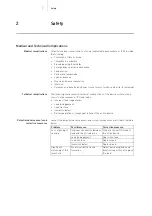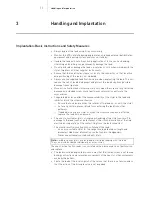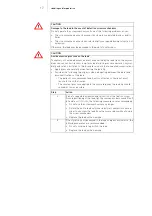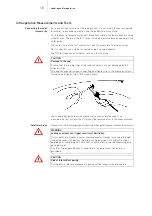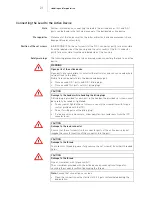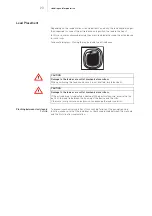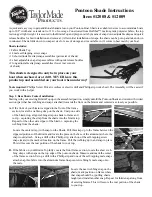
8
Safety
Risky Therapeutic and Diagnostic Procedures and Environmental Influences
Note:
Tissue damage due to excessive heating usually causes change or loss of the
sensing and pacing function of the implanted lead.
Improper procedures
The procedures listed in the following table must be avoided for patients with an
implanted lead or a device system (pacemaker or ICD).
Magnetic resonance imaging
Magnetic resonance imaging is contraindicated due to the associated high
frequency fields and magnetic flux density.
•
Patients with an implanted lead of this type may be examined using magnetic
resonance imaging only when specific measures have been taken to ensure the
safety of the patient and device.
•
Please contact the responsible authorities or BIOTRONIK beforehand to
determine whether these products are actually certified "MR conditional" in
your country or region.
Procedure
Type of danger
Diathermy
•
Tissue damage due to excessive heating of
the lead
•
Induction of ventricular fibrillation
Magnetic resonance imaging
(Please read the explanation at the
end of this section.)
•
Tissue damage due to excessive heating of
the lead
•
Change of position of the lead (lead
dislodgement) or the active device
•
Pulse inhibition, asynchronous and/or
triggered pulse delivery by the active
device
Hyperbaric oxygen therapy
•
Penetration of bodily fluids into the lead or
device
Transcutaneous electrical nerve
stimulation (TENS), stimulation
current
•
Induction of ventricular fibrillation
•
You can find detailed information about the requirements, conditions and
measures for safely conducting an MRI scan in our manual "ProMRI
®
,
MR conditional device systems."
You can download this manual as a PDF file from
www.biotronik.com/manuals/manualselection or
https://manuals.biotronik.com or order a printed copy from BIOTRONIK.







